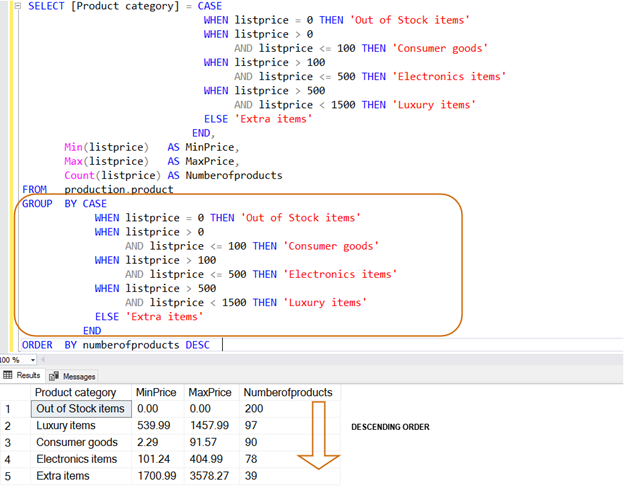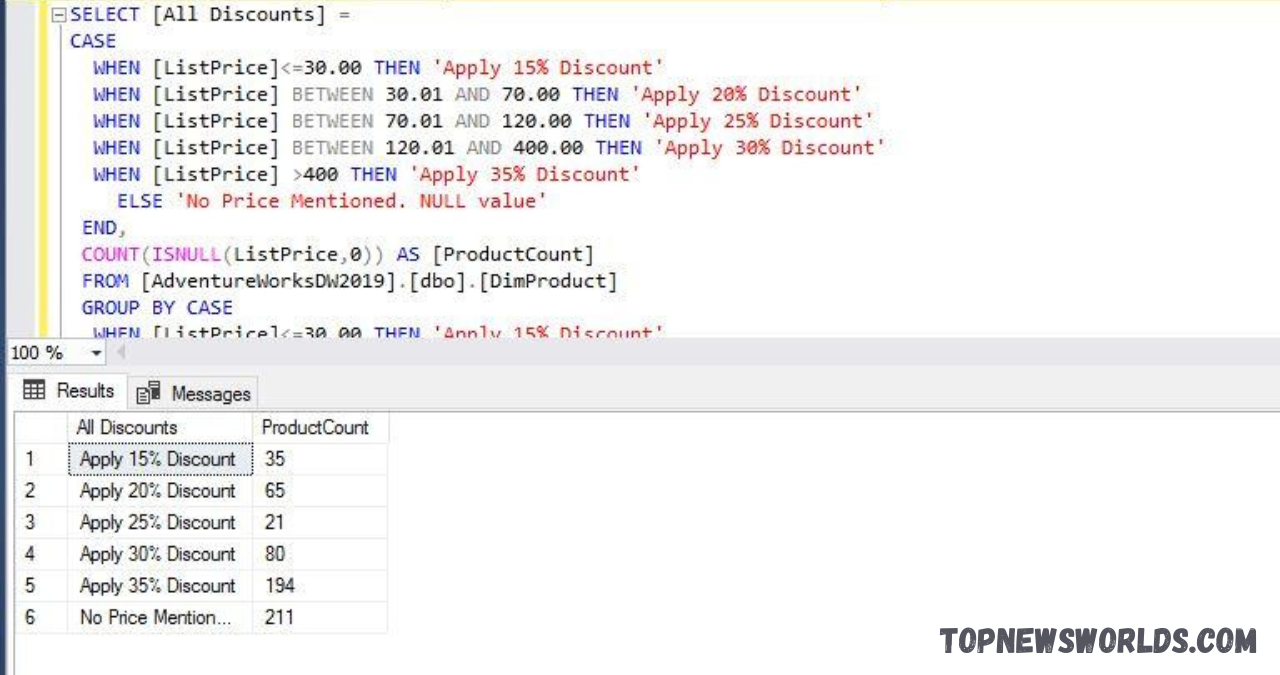SQL CASE WHEN (Structured Query Language) is a powerful tool for interacting with relational databases, and it allows for complex data manipulation, filtering, and retrieval. A crucial component of SQL is conditional logic, and one of the most versatile SQL CASE WHEN for implementing this is the CASE WHEN statement. Whether you’re creating complex reports, categorizing data, or transforming information dynamically, understanding how to use CASE WHEN can elevate your SQL CASE WHEN skills to the next level.
In this article, we’ll dive deep into the SQL CASE WHEN statement, exploring its basic structure, advanced applications, common pitfalls, and real-world use cases. By the end, you’ll have a comprehensive understanding of how to effectively use CASE WHEN to handle conditional logic in your SQL queries.
Understanding the Basics of the SQL CASE WHEN Statement
The CASE WHEN statement in SQL is a versatile tool for implementing conditional logic in a query. Think of it as SQL’s version of the IF-ELSE structure in programming languages. It evaluates conditions and returns a value when the condition is met, or another value when it’s not.
This statement evaluates a set of conditions for each row in your dataset and returns a result based on the condition that is true. If none of the conditions are met, the ELSE clause provides a default result. The CASE WHEN statement can be used in SELECT, INSERT, UPDATE, and even DELETE queries.
SQL’s CASE WHEN statement simplifies complex decision-making, making it a core tool for anyone working with SQL data. Whether you need to categorize data, transform it, or even compute new values, CASE WHEN is your go-to solution.
Structure of a CASE WHEN Statement
The structure of the CASE WHEN statement can vary slightly depending on the use case. There are two primary types of CASE statements in SQL: Simple CASE and Searched CASE.
Why Use CASE WHEN in SQL Queries?
The primary advantage of using the CASE WHEN statement is its ability to handle complex logic directly within your SQL queries. In many cases, the use of CASE WHEN can eliminate the need for additional JOIN statements or subqueries, making your code cleaner and more efficient.
Advanced Usage of CASE WHEN in SQL
One of the powerful features of the CASE WHEN statement is the ability to combine multiple conditions. You can use logical operators like AND, OR, and NOT to create more intricate conditions for your logic.
CASE WHEN with Aggregate Functions
Another advanced use of CASE WHEN is combining it with SQL aggregate functions, like SUM, COUNT, and AVG. This allows you to perform conditional aggregation directly in the query.
Nesting CASE WHEN Statements
Sometimes you might need to evaluate multiple conditions that are dependent on one another. This is where nesting CASE WHEN statements comes in handy. You can place one CASE WHEN inside another to evaluate more complex logic.
Common Pitfalls and Best Practices for CASE WHEN in SQL

While CASE WHEN is powerful, it’s important to avoid common pitfalls. One frequent mistake is misplacing the ELSE clause. If you forget the ELSE clause, NULL will be returned for rows where no conditions are met. Always ensure you provide an ELSE statement for handling cases where no conditions match.
Another common issue is having conflicting conditions. Ensure that the conditions in your CASE WHEN statement are mutually exclusive or ordered in a way that avoids overlap.
Performance Considerations
While CASE WHEN is convenient, overly complex statements can negatively impact performance, especially in large datasets. Using multiple CASE WHEN statements with intricate logic can slow down query execution times. To optimize performance, try to reduce the complexity of your conditions and use indexing where possible.
Best Practices for Readable Code
For better readability, avoid making your CASE WHEN statements too complex. Use indentation and comments to make it clear what each condition is doing. Keeping your logic simple and modular will not only improve performance but also help others (or your future self) understand the query.
Real-World Use Cases and Examples of CASE WHEN
One of the most common use cases for CASE WHEN is in data transformation. You might need to modify or categorize data dynamically based on certain conditions.
Conclusion
The SQL CASE WHEN statement is an invaluable tool for anyone working with relational databases. Whether you’re dealing with complex data transformations, aggregations, or conditional logic, mastering CASE WHEN will enable you to write cleaner, more efficient queries. By understanding the syntax, advanced usage, best practices, and real-world applications, you can harness the full power of conditional logic in your SQL queries.
You May Also Read: https://topnewsworlds.com/hazevecad04-online/




